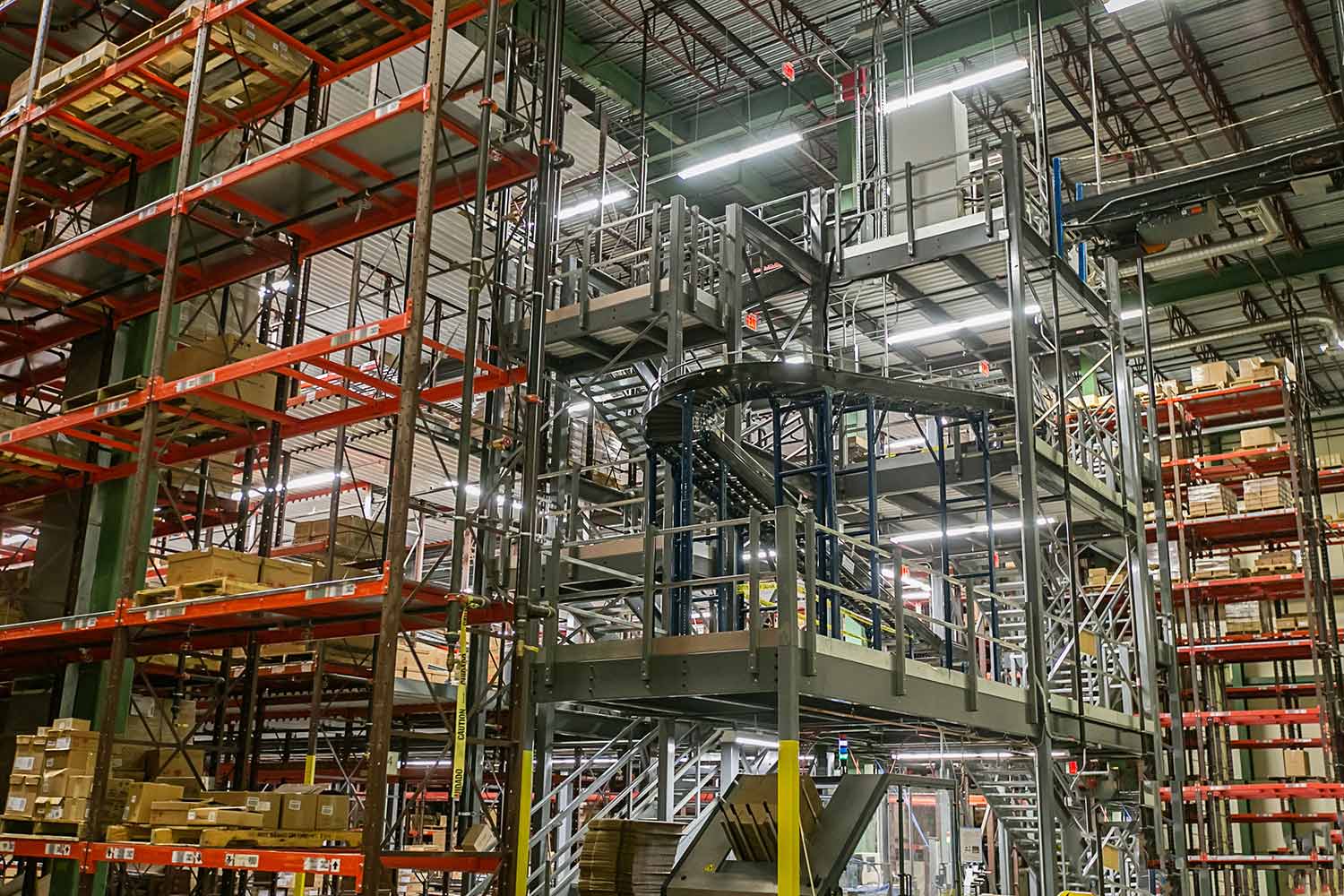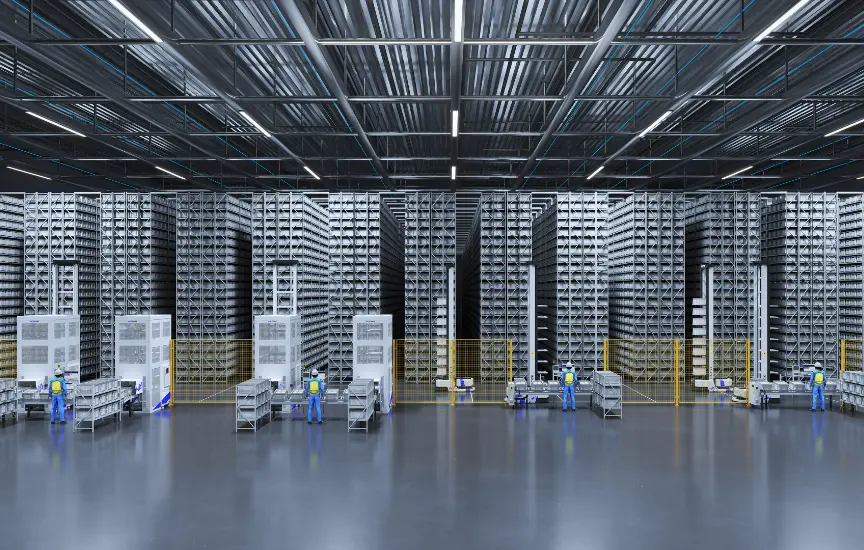
January 29th, 2024
4 min read5 Hot Trends for 2024 Warehouses & DCs
Five trends to keep an eye on as we progress through 2024 and beyond.
As 2024 continues to shake off the pandemic-era supply chain issues, certain long-term warehousing trends are continuing to emerge, strengthen, and ultimately shape the remaining years of the decade. The organizations that fully understand and embrace these trends will be the ones best positioned going forward.
5 Hot Trends for 2024 Warehouses & Distribution Centers
- Ongoing Advancement in Automation and Robotics
- Elevated Usage of Big Data
- Micro-Fulfillment Centers on the Rise
- Surge in Sustainable Warehousing
- Demand for Logistics and Automation Pros
Ongoing Advancement & Growth in Automation and Robotics
First off, there’s no doubt automation and robotics will further dominate the workspace. As these technologies continue to be refined and perfected, the benefits of their use will be too valuable to deny. Automated and robotics conveyors, sorters, packagers, and storage systems provide increased efficiency, better quality control with fewer errors, and greater flexibility and scalability. With the ability to run such systems 24/7, these benefits, in turn, minimize waste, decrease downtime, and create long-term cost savings.
Keep an eye out for greater use of such technologies as automated guided vehicles (AGVs) and autonomous mobile robots (AMRs), automated storage and retrieval systems (AS/RS), vertical lift modules (VLMs), and collaborative robots (or cobots).
Elevated Usage of Big Data & Predictive Analysis
Warehouses and distribution centers increasingly rely on accumulating and forecasting data in order to run efficiently, maintain the smallest possible footprint, and provide just in time (JIT) delivery. Automated systems and emerging technologies not only generate big data, but also are an integral element in the optimization and streamlining of operations through the implementation of the data gathered.
Look for more use of predictive analytics for demand forecasting, inventory management optimization, dynamic routing, and real-time monitoring. What’s more, big data also means a more sustainable allocation of energy resources.
Micro-Fulfillment Centers on the Rise
The coming years will demonstrate that micro-fulfillment centers (MFCs) are no longer only the domain of Amazon, grocery conglomerates, and big-box retailers. More companies will begin to use these small-scale automated facilities to handle e-commerce order fulfillment efficiently and quickly.
Expect increased utilization by last-mile delivery providers, direct-to-consumer brands, startups looking to disrupt the status quo of traditional supply chains, and brick-and-mortar retailers seeking to optimize omni-channel operations.
Surge in Sustainable Warehousing
As we all know, sustainability is a universal buzzword that transcends industries. But the reality of the importance of sustainability is increasingly resonating with consumers and corporations alike. No matter where you stand on issues related to environmental conservatism, sustainable business practices such as resource optimization lead to economic stability and long-term viability.
Sustainability contributes to environmental protection, social well-being, and economic stability by taking a holistic approach to development through technologies such as automation and robotics. Which, even if you were only concerned about the financial bottom line, would be a good thing.
Demand for Logistics and Automation Pros
Any time an industry makes significant leaps, these changes lead to dramatic changes in the workforce. As a result of the fast adoption of automation and robotics, professionals with specialized knowledge in automating and managing warehouse systems will become highly sought-after in the industry.
As the United State barreled into the Industrial Revolution, trains replaced horses and wagons, and eventually cars outshone both. Farriers, the people who shoed horses and trimmed their hooves, went from commonplace to rare. But in their place came locomotive and automotive experts. As automation takes over the most monotonous and dangerous tasks in the warehouse, the demand for logistics and automation experts will increase. Given the growth of e-commerce and other distribution-dependent industries, along with the steady shrinking of the general labor force, it’s clear that there would not be a sufficient workforce very soon without the availability of automation and robotics.
Your Next Step
The upcoming trends in warehouse automation technology are expected to influence the warehousing industry in 2024 and beyond. Warehouses that can proactively anticipate and adjust to these changes are likely to achieve greater success in the future.
Warehouse operators can ready themselves by investing in automation, embracing digital tracking systems, and recruiting skilled logistics and automation professionals.
Are you ready to address these trends? Our automation experts can help you streamline your operations to maximize productivity and ridiculously increase your ROI. Contact our team today.
Related Posts

The Human-Robot Partnership Requires an Upskilled Warehouse Workforce
Article
Professional Integration is Crucial for Warehouse Automation & Robotics Implementation
Article